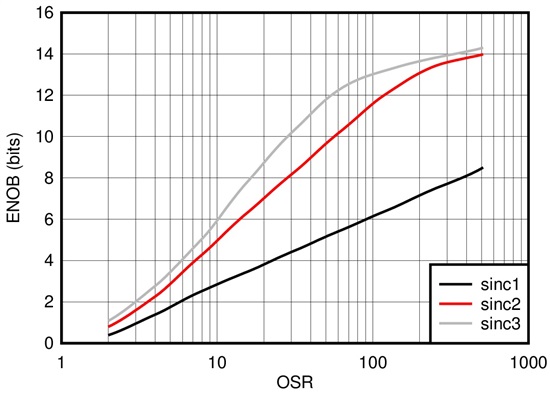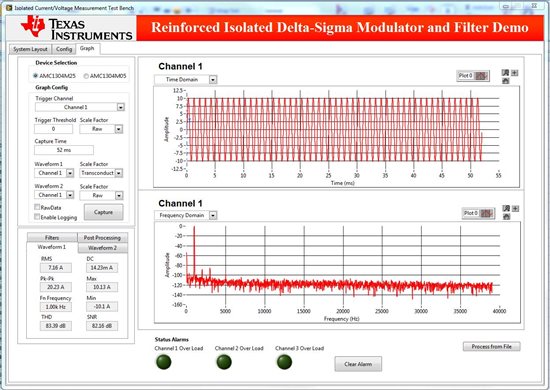Galvanic isolation is a key requirement in many industrial applications. Isolation provides technical advantages such as breaking noisy ground loops, and it also protects the end user and sensitive equipment from potentially dangerous high voltage and transients.
An isolated current-monitoring acquisition system can be constructed as shown in Figure 1: the input current is transformed into an analog voltage with a current shunt, and such voltage is fed to an ADC.
Figure 1: Isolated Data Acquisition System Using ADC and Digital Isolator
If a system can be constructed as shown in Figure 1, it bears the questions: Why would one use an isolated delta-sigma modulator instead of a full ADC and digital isolator combination? Why would one opt for a system as the one depicted in Figure 2?
Figure 2: Isolated Data Acquisition System Using a Delta-Sigma modulator
The primary task of isolated acquisition systems is to achieve high precision and accuracy at the required data rate but a secondary function can be implemented with the system depicted in Figure 2. Two digital signal processing paths (DSP) can be implemented onto the delta-sigma modulated bit stream. For example, suppose that the primary path decimates the incoming bit stream (e.g. supplied at 20 MHz) by a factor of 256. This primary DSP path yields a high-resolution current measurement at 78.1 kSPS.
Then, a secondary DSP path can be implemented with the objective of generating a warning signal in the case of a short-circuit event. This secondary DSP path takes the same delta-sigma modulated stream that is concurrently processed by the primary path but it applies a much lower decimation factor. For example, if the secondary decimation factor is chosen as 4, the user obtains a secondary signal output at 5 MSPS. This signal is compared in real time to a pre-set threshold; if the threshold is exceeded, a command signal is issued to open a safety relay or de-energize sensitive components. A single delta-sigma modulator allows the user to implement these two DSP paths with minimal component count.
It is important to mention a tradeoff in the selection of a lower decimation: lower decimation, also referred to as over-sampling ratios (OSRs), reduce the resolution of the filter output. Figure 3 shows the system resolution (expressed in effective number of bits -ENOB) for a given OSR and for various filter types available in the TMS320F28377D.
Figure 3: System Resolution for a given OSR in the TMS320F28377D
Both system architectures (Figures 1 and 2) achieve high precision. The key difference is that the dual a) high-precision and b) warning signal issuing functionality can be accomplished with a single AMC1304M25 isolated delta-sigma modulator. Alternative architectures require two ADCs: one high precision ADC running at 78.1 kSPS and another lower precision converter running at 5 MSPS.
The integration of the isolation barrier into a single IC allows solutions based on the AMC1304M25 to save board space and lower the component count resulting in simplified board assembly, higher reliability and lower overall solution cost.
The Figure 2 solution is showcased in a new current sensing reference design: the TIPD165. Using the reference design as a guide, system designers will have a full platform to experiment with the AMC1304M25 and the TMS320F28377D. The graphical user interface (GUI) plus firmware included in TIPD165 can further help designers get started with isolated current sensing designs.
Figure 4 shows the graph panel of the GUI. Here, users can observe key AC and DC performance.
Figure 4: Graph panel of TIPD165 GUI
As showcased in the TIPD165, the AMC1304M25 and TMS320F28377D provide a robust platform for isolated acquisition systems. The isolation specifications of the AMC1304M25 coupled with the processing capabilities of the TMS320F28377D allow designers to create high precision systems with fast response to over-current events.
Related resources:
- TIPD165: Isolated, Shunt-Based Current Sensing Reference Design
- From the Analog Applications Journal: Isolated sensing systems with low power consumption




